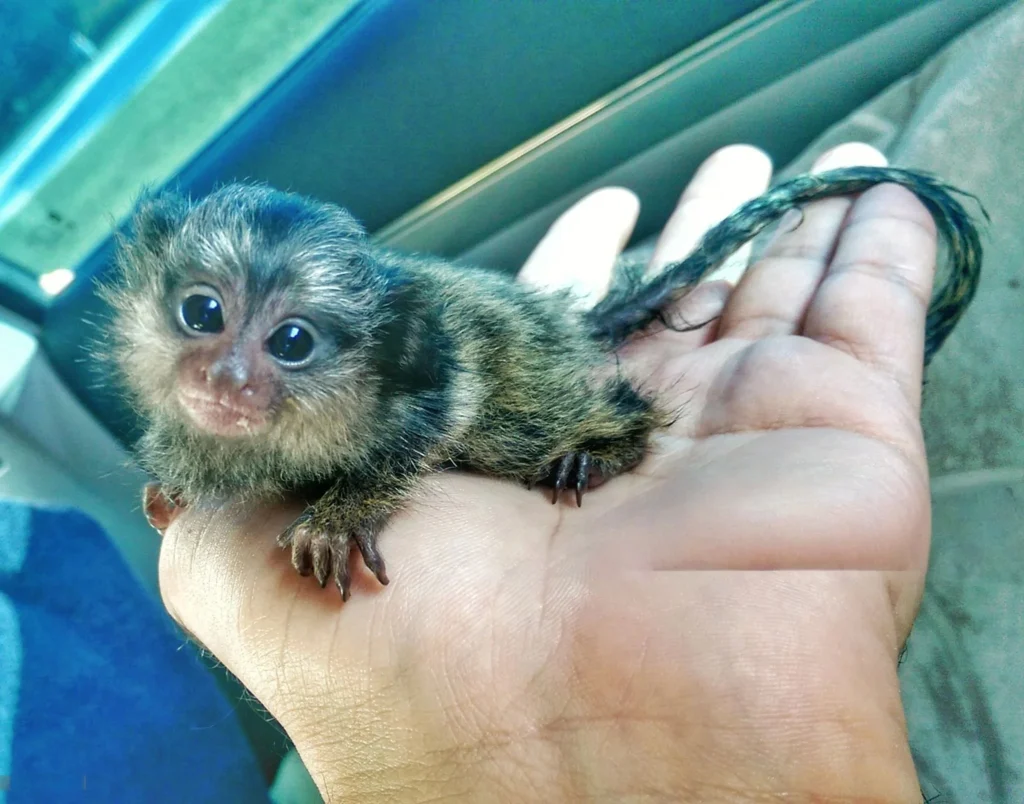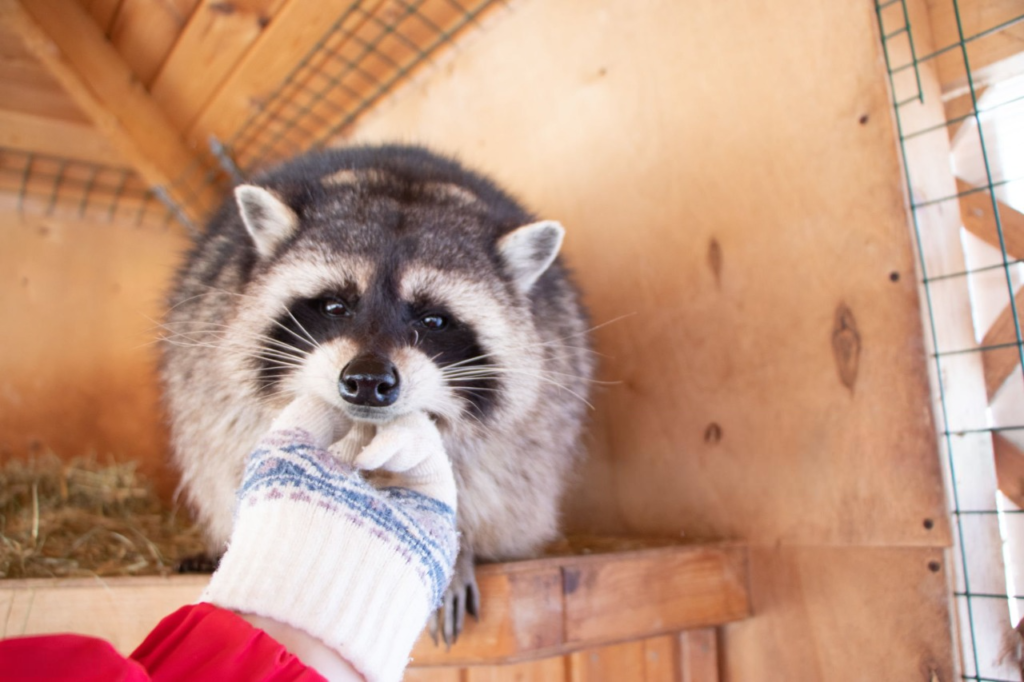Can you own a polar bear as a pet? No, they don’t make good pets and carry a lot of risks. Even if some people managed to tame and train a polar bear, they will always remain wild animals. This article is all about the reasons why you should opt for another species instead.
Can We Keep a Polar Bear as a Pet?
In short: No, you shouldn’t keep a polar bear as a pet. Polar bears are wild animals, not domesticated creatures like dogs or cats. They require specific arctic conditions, massive space to roam, and a diet of high-fat prey like seals—not exactly something you can pick up at your local pet store.
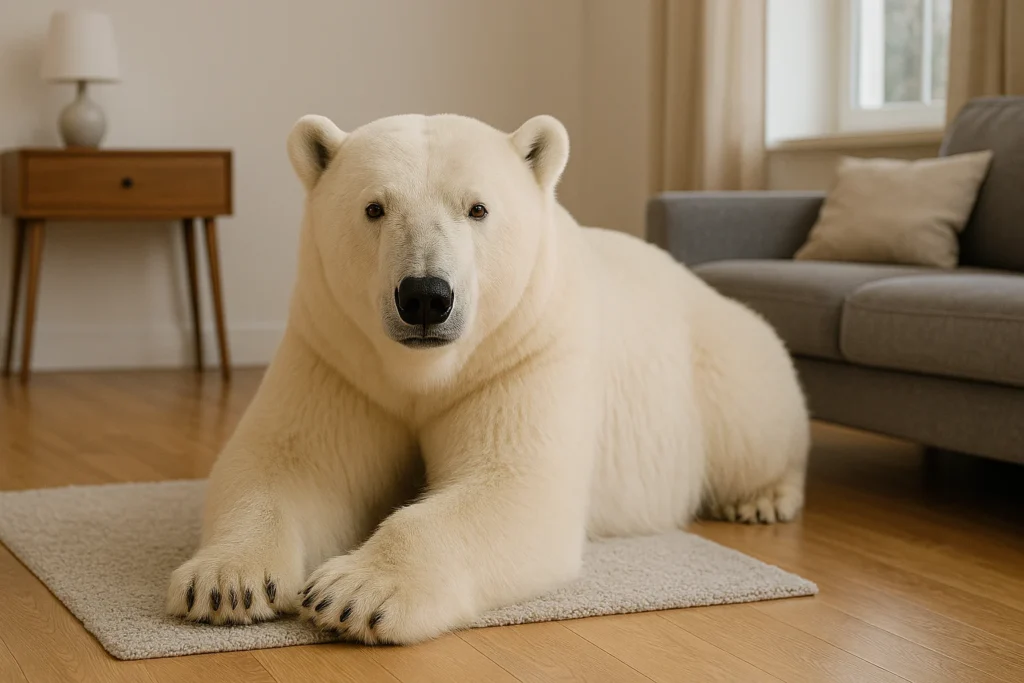
Is It Legal To Own A Pet Polar Bear?
No, in most western countries polar bears as pets are banned. However, you might find some states within the US or territories in Canada where it might be legal.
It’s just like it is with other pet bears. The barriers are high in most places and you would have to put some effort in. Most states will ask for a license or permit and you have to fulfill all the requirements needed (and pay a lot of money) to get it.
Zoos and animal parks, as well as sanctuaries, are the only facilities that can get a license easily.
You as a private person would have to show your experience and knowledge about polar bears. Be prepared that someone will come and visit your place. The person will take a close look at the enclosure and check if all requirements for the bear as well as safety aspects are met.
Can You Own a Polar Bear in the US?
In most states, owning a polar bear in the US is illegal. Polar bears are protected under the Marine Mammal Protection Act, and possession requires extremely rare federal permits for educational or scientific purposes—not for private pet ownership.
Polar Bear as a Pet Pros and Cons
While the idea is fascinating, the reality is harsh.
Pros:
- Unique and impressive: Owning a polar bear would certainly make a statement.
- Bonding (in rare cases): Some humans, like Mark Dumas, have developed relationships with polar bears.
Cons:
- Extremely dangerous: There are tragic cases of pet polar bear kills owner.
- Illegal in most places: Especially in the U.S.
- Very high maintenance: Requires cold environments and tons of food.
How to Care for a Polar Bear as a Pet
1. Habitat Requirements
Polar bears are arctic animals, adapted to cold, snowy environments with access to ice, water, and large hunting grounds.
- Space: At least several acres, ideally 10+ of secured, enriched, and refrigerated land.
- Temperature: Cold environments year-round (below 32°F/0°C). This means high-powered industrial cooling systems.
- Swimming Area: They are semi-aquatic animals and need large, deep pools for swimming and cooling down.
- Enrichment: Logs, snow, puzzles, and activities to stimulate their hunting instincts and avoid mental stress.
2. Diet and Feeding
A polar bear eats 10,000 to 20,000 calories per day—mostly fat-rich meat.
- Diet: Seals in the wild; in captivity, a substitute of fish, meat, and fats.
- Feeding Schedule: 1–2 times per day, with regular fasting periods to mimic natural hunting cycles.
- Cost: Thousands per month in food alone.
3. Veterinary Care
- Exotic Animal Veterinarian: You’d need a vet trained in large carnivores.
- Routine Care: Dental, digestive, and skin issues can occur in captivity.
- Emergency Protocols: Polar bears can become extremely dangerous if sick or stressed.
4. Safety and Containment
- Secure Fencing: At least 15+ feet tall with underground reinforcements.
- Emergency Exits & Tranquilizers: Staff must be trained to handle aggressive behavior.
- Interaction Limits: Direct interaction is dangerous and discouraged, even by professionals.
5. Legal & Ethical Concerns
- Permits: Extremely rare, and usually only granted to zoos or sanctuaries.
- Illegal Trade: Buying or selling a polar bear without proper documentation is a criminal offense.
- Welfare: Polar bears are not domesticated animals. Keeping one can lead to suffering, aggression, and even fatal attacks (yes, there are real cases where a pet polar bear kills owner).
6. Psychological Well-being
Polar bears in captivity can suffer from:
- Zoochosis: Repetitive, obsessive behaviors from stress.
- Depression: Lack of stimulation or space causes mental health issues.
- Aggression: From frustration, boredom, or poor conditions.
Safer Alternatives
- Virtual Pets: Play with polar bears in Minecraft or other games where you can simulate the experience.
- Visit Sanctuaries or Zoos: Support ethical wildlife organizations.
- Adopt Symbolically: Help conservation efforts by “adopting” a polar bear through wildlife foundations.
No matter how much we romanticize the idea, polar bears are not pets. They’re powerful, wild creatures with complex needs that can’t be met in a home environment. Even expert trainers like Mark Dumas, who raised a polar bear from a cub, stress how dangerous and unsustainable it is.
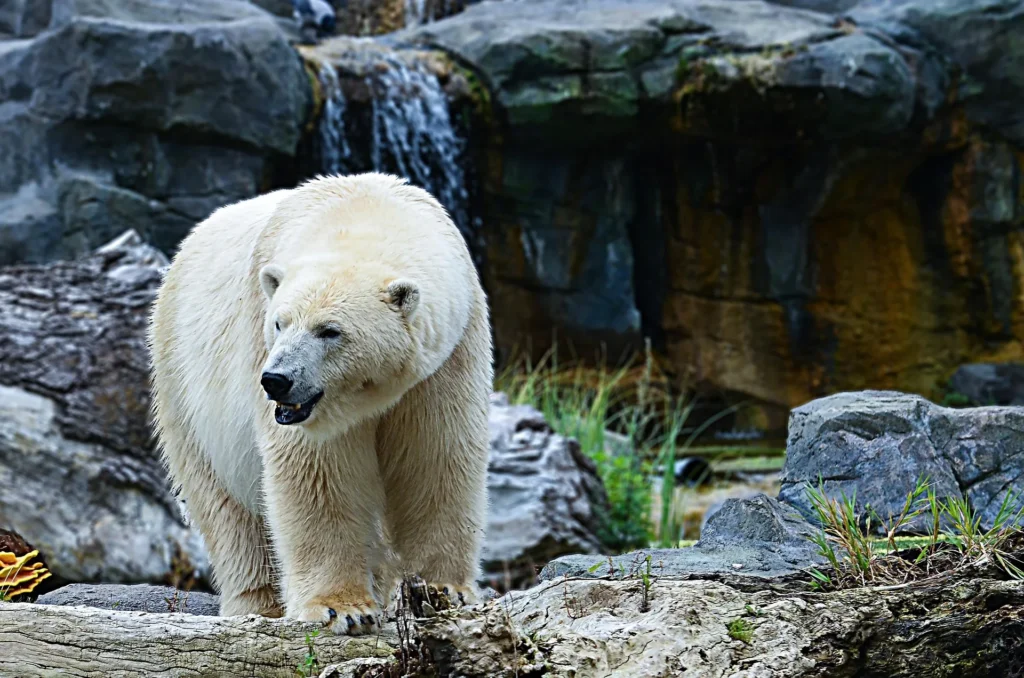
Polar Bears Aren’t Domesticated
As you can see in the video below, it’s very well possible to tame and train a pet polar bear. Mark Duma did exactly this with his female pet polar bear Agee.
Even though this video is fun to watch, you shouldn’t underestimate the time that is needed to form a relationship like this. Mark cared for his pet since she was a little cub. He spends several hours a day with her, a commitment which doesn’t work if you have a normal job with office hours.
That said, taming doesn’t mean domestication. A pet polar bear will always be a wild animal. Its unpredictable and wild instincts can kick in at any time.
Polar Bears Are Dangerous
Polar bears, like nearly all bears, are dangerous towards humans. No matter how well trained your pet is, visitors will never be safe. At least when they don’t know how to interact with a pet polar bear.
If polar bears feel threatened or provoked they will attack anything. There are reported cases of killed humans.
Not to mention that other pets are always at risk. A polar bear will see them as a potential meal.
Polar Bears Need Ice To Hunt
Polar bears live far beyond the arctic circle where temperatures are low even in the summer month. Far north where the sea is frozen all year, they can use the ice to hunt seals. Without the ice, they aren’t able to survive.
But there is another problem with pet polar bears which don’t depend on hunting. They live in regions where it can get as cold as -29° Fahrenheit and their thermoregulation stops working when the weather is too hot. This can be fatal as their thick fur ensures a body temperature of around 98.6º Fahrenheit.
It’s common that polar bears overheat even in winter when they are too active. That’s also the reason why you almost never see them running.
So to take proper care of your pet polar bear you would need a large room with an air conditioner for the summer months.
There Are No Vets
Another problem that you would face is that there are no vets available who can treat your pet polar bear if it gets ill.
Even if you find someone you can’t just take your pet to the doctors’ office as it is too big. An adult polar bear weighs 800 pounds on average. Transportation of the pet will always be a thing and you need a veterinarian who is willing to visit you at home.
However, most vets who are able to treat wild bears are working at zoos or animal shelters.
Polar Bears Are Endangered
There are also ethical components in owning a pet polar bear. Even though their main threat is habitat loss and not animal trade, every individual should stay in the wild.
With an estimated population of 26,000 according to the IUCN polar bears are listed as vulnerable.
The Pet Will Rule Your Life
Polar bears can live up to 35 years and more in captivity. This is a long commitment, especially when you take into consideration that they need a lot of care.
You have to spend as much time as possible with them daily. Vacations, even weekend trips, aren’t possible anymore unless you can take your pet polar bear with you. Unlikely as they are so difficult to transport. Additionally, they are most likely not welcome where you go.
So all your life is set by the pet until one of you both dies.
How Much Does A Pet Polar Bear Cost?
Polar bears are very expensive to keep as you can imagine. It’s not only that the price for the animal itself would be very high. Enclosure, veterinary care and food all add up quickly.
Plan to spend more than $100,000 to set everything up. A large pool is needed and there are also high maintenance costs for that.
Of course, you would have a hard time finding a polar bear for sale. Your local pet store is the wrong address and specialized breeders work at zoos for the most. They will sell the cubs only to other zoos which have a valid license.
Perhaps you could find some poacher who is willing to catch a polar bear for you. But that would be very expensive as these persons have to cover their risk of being caught.
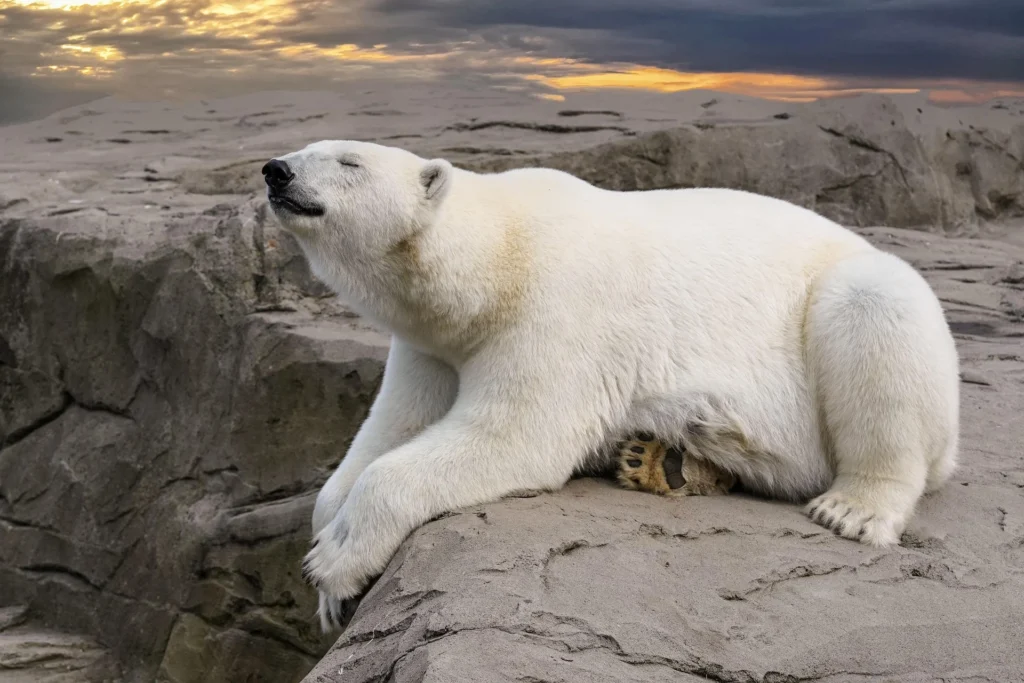
Pet Polar Bear for Sale: Is It Real?
You might find shady listings claiming to offer a pet polar bear for sale, but these are almost certainly scams—or worse, part of the illegal wildlife trade. Purchasing or selling polar bears is heavily regulated or outright banned in most countries due to conservation laws.
Where Can I Pet a Polar Bear?
Short answer: you can’t. Polar bears are not safe to pet, even in zoos. However, some wildlife sanctuaries offer safe viewing experiences or encounters with bear species that are more accustomed to human interaction (but not polar bears).
Has Anyone Kept a Polar Bear as a Pet?
Yes, but only one person is widely known: Mark Dumas, a professional animal trainer in Canada. He raised a female polar bear named Agee and became the only person on record to swim and play with a polar bear safely. But even he warns against anyone trying to do the same.
Is Polar Bear Human Friendly?
Despite their cute appearance, polar bears are not human friendly. They are the largest land carnivores and have been known to stalk and attack humans in the wild.
Final Thoughts: Leave the Polar Bears in the Wild
While the idea of having a polar bear as a pet might seem fascinating, it’s filled with more cons than pros, major safety risks, and serious ethical concerns. If you’re curious about them, visit a zoo or learn more about polar bears through conservation efforts—or better yet, befriend one in Minecraft.

